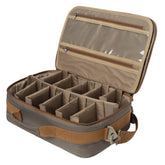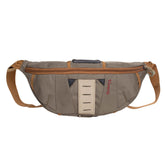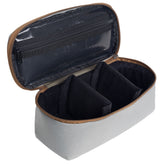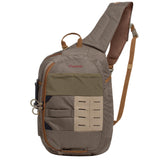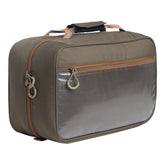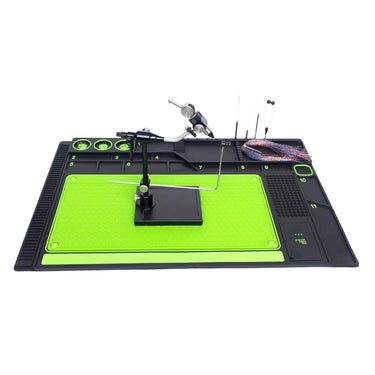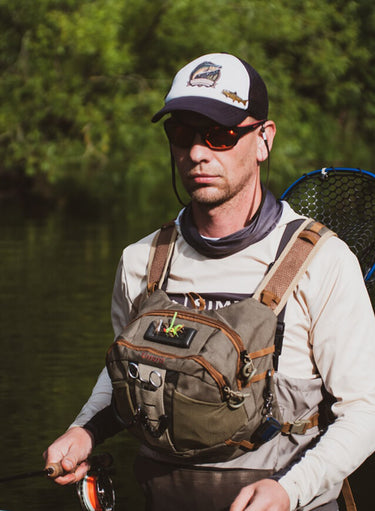Fly Reel: The Best Options for Saltwater, Trout, Bass, and Salmon Fishing
As an avid fly fisher, I've come to appreciate the critical role that a good fly reel plays in my fishing experience. Choosing the right fly reel can enhance my performance, whether I'm casting for trout, bass, or salmon in saltwater environments. Understanding the nuances of these reels tailored to different species can significantly impact my success on the water.

For instance, when targeting trout, I prefer lightweight reels that offer precision and smooth drag, while for bass fishing, a sturdier reel that can handle aggressive strikes is essential. In saltwater scenarios, durability and corrosion resistance become paramount, ensuring my gear withstands harsh conditions. Each type of reel is designed with specific features to optimize my fishing strategy and improve my chances.
When I'm ready to make a purchase, having options like free shipping makes the buying process more convenient, allowing me to focus on what truly matters: enjoying my time spent on the water. Explore with me how the right fly reel can make all the difference in elevating your fishing game.
Understanding Fly Reels
Fly reels are essential components of fly fishing setups, designed to store line and manage drag when fighting fish. Their construction and various types significantly impact performance and user experience.
Components and Materials
Fly reels typically consist of several key components: the spool, frame, drag system, and handle. The spool holds the fly line, while the frame supports the entire structure.
Materials matter greatly. Machined aluminum is common for its durability and corrosion resistance. Some reels may feature a composite frame. Drag systems can vary, using cork or smooth disc systems for precise adjustments.
For instance, reels like the Lamson Guru S and Sage models are known for their robust drag systems. Brands such as Redington and Ross Reels offer options tailored for different fishing needs.
Types of Fly Reels
There are primarily three types of fly reels: single-action, multipliers, and automatic reels.
- Single-action reels are the simplest, where each turn of the handle retrieves the line directly.
- Multiplier reels enable a faster line retrieval rate for quicker catches. These are efficient for large fish.
- Automatic reels provide a hands-free experience, releasing line when needed and retrieving it at the turn of a handle.
Large arbor reels are gaining popularity for their fast line retrieval and reduced line coiling. Models like the Lamson Liquid and Lamson Speedster S exemplify this design, appealing to both beginners and seasoned anglers.
Selecting the Right Fly Reel
Choosing the appropriate fly reel is crucial for enhancing your fishing experience. The right reel will depend on the specific conditions you’ll face and the species you’re targeting.
Saltwater Fly Reel Choices
When targeting saltwater species like tarpon and bonefish, a corrosion-resistant reel is essential. These reels are often made of aluminum or composite materials that withstand the harsh salt environment.
I look for a large arbor design for quick line retrieval. An adjustable drag system is crucial to manage the strength of saltwater fish effectively. Consider reels with sealed drags to prevent saltwater intrusion, ensuring longevity.
Additionally, pay attention to the line capacity. A reel that can hold enough backing and fly line is vital, especially for powerful runs that saltwater fish are known for.
Trout and Steelhead Reels
For trout and steelhead, my choices lean towards lightweight reels that allow for smooth casting and retrieval. A good trout reel should balance well with a light fly rod.
I recommend looking for a reel with a reliable drag system that can handle sudden bursts of energy from steelhead during a fight. A click-pawl drag or a disc drag system can be effective, depending on your preference.
The line capacity should accommodate the type of line you are using, whether floating or sinking. Weight and size matter; I typically choose reels in the 3-6 weight range for optimal performance in freshwater settings.
Bass and Salmon Fishing Reels
When it comes to bass and salmon fishing, versatility in a reel is important. A quality fly reel for bass fishing should be robust, able to handle strikes and fights in heavy cover.
I prefer a medium to large arbor for higher retrieval ratios, allowing me to recover line quickly. An adjustable drag is key, particularly for salmon that make powerful runs.
Ensure the reel can hold enough line and backing for both species; a capacity for 200+ yards is ideal. Durability is critical, as the conditions can vary greatly from rivers to lakes.
Each of these factors plays a significant role in selecting the right fly reel tailored to your fishing needs.
After Purchase Care
Caring for my fly reel is essential to ensure its longevity and performance. Here are some steps I follow for proper maintenance.
Cleaning:
After each use, especially in saltwater, I rinse my reel thoroughly. I use fresh water to remove salt and debris, which can cause corrosion.
Inspection:
I regularly check for any signs of wear or damage. This includes inspecting the drag system, spool, and line for any frays or issues.
Lubrication:
For optimal performance, I apply a light lubricant to moving parts periodically. This helps to maintain smooth operation and prevent seizing.
Storage:
When not in use, I store my reel in a cool, dry place. Using a protective case is a good way to avoid unintentional damage.
Corrosion Resistance:
I prefer durable and corrosion-resistant materials. This makes my gear more resilient against harsh environments, particularly in saltwater.
Line Management:
I manage my line properly to prevent tangling and damage. Regularly checking for knots and replacing worn line is essential.
By following these care steps, I make sure my fly reel remains in excellent condition, ready for my next fishing adventure.



